Importing Data to Zoho CRM
Data can be gathered through various sources such as, purchasing a record database, collecting from trade shows and campaigns, and so on. Importing records from such external sources to Zoho CRM is one of the most important lead creation activities in any business. For that reason, importing should be easy and should help you maintain clean data without duplicates.
You can import your data using either of the two options mentioned below:
Importing data to individual modules in Zoho CRM : Individual files can be imported, one at a time, to a specific module.
Migrating data from other accounts to Zoho CRM : The Data Migration wizard helps you to migrate data from other CRM systems to Zoho CRM. The wizard enables you to attach the CSV file of the module to be migrated and set the supported Date and Time format in the import file to avoid values being ignored during the migration. You can also ask Zoho CRM to notify you when the import is complete by selecting the Send Email Notification option. After the necessary details are specified, you will need to map all the mandatory fields in the CSV file with those in Zoho CRM. See Also Migrate Data
Import Checklist
Before importing the data, please go through the following checklist:
- PermissionMake sure you have the access and privilege to Import data. If you do not have this permission, the Import link will be hidden in your user interface.
- File FormatThe supported formats are Excel (XLS, XLSX), Comma Separated Value (CSV), and Business Card or vCard Format (VCF) . All file attachments should be separated from the data.Unexpected errors may occur if the XLS/XLSX files contain any special controls such as combo filters or images embedded in them.
- Characters not allowedAny data for the file to be imported should not contain data enclosed in <script> </script>.
- Mandatory FieldsEach required (mandatory) field must contain a value. Make sure you do not leave any mandatory fields blank, in the import file. For instance, when you are importing account information, each account record must include an Account Name . Please note that you cannot proceed to the next step without mapping the mandatory fields.
- Check box DataMake sure that the data you plan to import from Boolean or check box fields contain values that will properly convert during the import process.Imported data from Boolean and check box fields are converted as follows:
- If check box is selected: True or 1
- If check box is not selected: False or 0
- If check box is selected: True or 1
- Drop-down ListAll data values displayed in the drop-down lists must exist in the corresponding Zoho CRM fields.For instance, if you plan to import account information that contains a value for the industry type drop-down list, before you import the account information, make sure all the industry values in the source file already appear in the drop-down list. If the values do not exist, you must either change the values in the source file to match the existing values in Zoho CRM, or have your administrator add the new values.If values are not added in the drop-down list, data can still be imported. After importing, if you change the value for the field, you cannot change it back to the old one as it will not be available in the list.
- Field NamesMake sure the first row of data (records) in the source file contains the column headings or field names rather than the actual data values. These heading field name values help identify the data when you map the new data to the existing fields in Zoho CRM.
- Blank rows in the import fileMore than 10 blank rows in the file might indicate the end of the file. Data after the blank rows will be ignored during import. Make sure not to leave blank rows in between rows of data.
- File SizeMake sure the file size does not exceed the following limits according to your edition of Zoho CRM:CSV files: Enterprise and Ultimate - 25 MB , Professional and Standard - 10 MB , Free - 5 MB.VCF files: 5 MB for all editions.
- Rows
Number of rows that can be imported depends on the edition:
Standard - 10,000; Professional - 20,000; Enterprise - 30,000; Ultimate - 50,000. - External field
Any field present in the .CSV file can be mapped with an external field present in the CRM module. The value of the external ID field can be updated only through API.
The modules along with their Zoho-defined mandatory fields are described in the table below. Please make sure to map these fields when you import. There maybe other mandatory fields in each module too, but you can always customize and mark the fields as non-mandatory, if required.
| Modules | Mandatory Fields | Modules | Mandatory Fields |
| Leads | Last Name | Cases | Case Origin Subject Status |
| Accounts | Account Name | Solutions | Solution Title |
| Contacts | Last Name | Price Books | Price Book Name |
| Deals | Deal Name Date Closing Date | Products | Product Name |
| Campaigns | Campaign Name | Vendors | Vendor Name |

- Using the Import feature, you cannot import calls, meetings (activities), reports, invoices, quotes, purchase orders, forecasts, sales orders, and templates into Zoho CRM.
- However, you can import events in ICS format from Calendar.
Import Limits
If the import file is in .XLS, .XLSX or .VCF format, you can import a maximum of 5000 records/batch for all CRM editions. However, to import more than 5000 records/batch your import file must be in .CSV format only, and the maximum number of records that you can import will vary according to your subscription.

- The supported formats are Excel (XLS, XLSX), Comma Separated Value (CSV) and Business Card or vCard Format (VCF) .
- If your records exceed the specified limits mentioned above then you can split the records in two or more files and import them.
- When you are importing a VCF file, the record image field will be automatically associated with the record during the import process and will not be available for mapping.
Import Data to a Module
Import all the records that are owned by (assigned to) the users in your organization, including the records owned by you.
To import data
- Click the appropriate [Module] tab (e.g., Leads, Contacts, Accounts, etc).
- In the [Module] Home page, click Import Leads[Records] from Create Lead dropdown.
- Click Browse to upload the file or drag and drop the file in the From File section.The character encoding will be automatically detected.
- If needed, change the character encoding from the drop-down list and click Next.
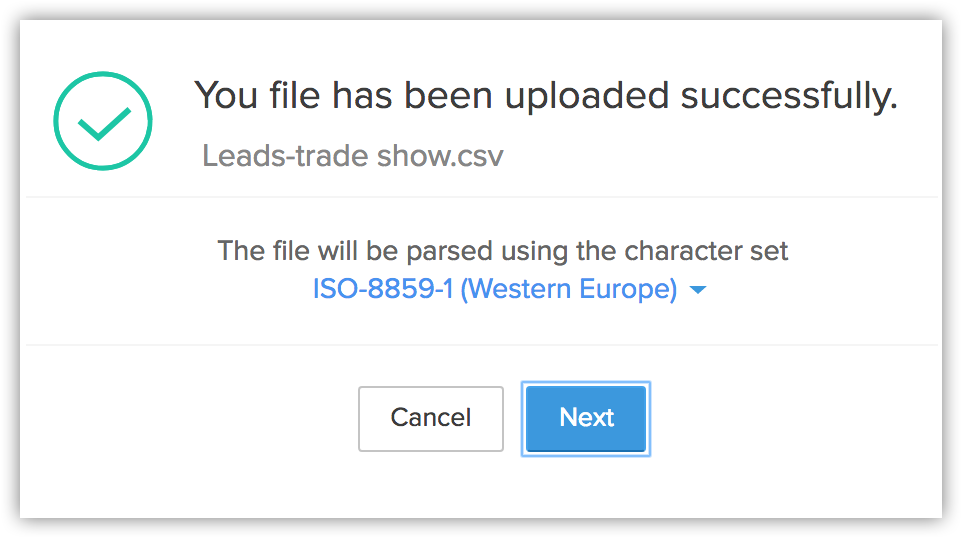
- Select the Layout into which you want to import the records. See Also, Page LayoutsIf you do not have a layout created, the records will be imported to the standard layout and the option to choose a layout will not be available.
- Select one of the following options.
- Add as new [Records] : Choose this option to import all the records in the import file to Zoho CRM.Select Record ID or Email / Record Name from the drop-down list. In order to avoid data duplication, you have this additional option to skip records from the file that match existing records in Zoho CRM. These can be filtered based on record ID, name or email address, as per the module.
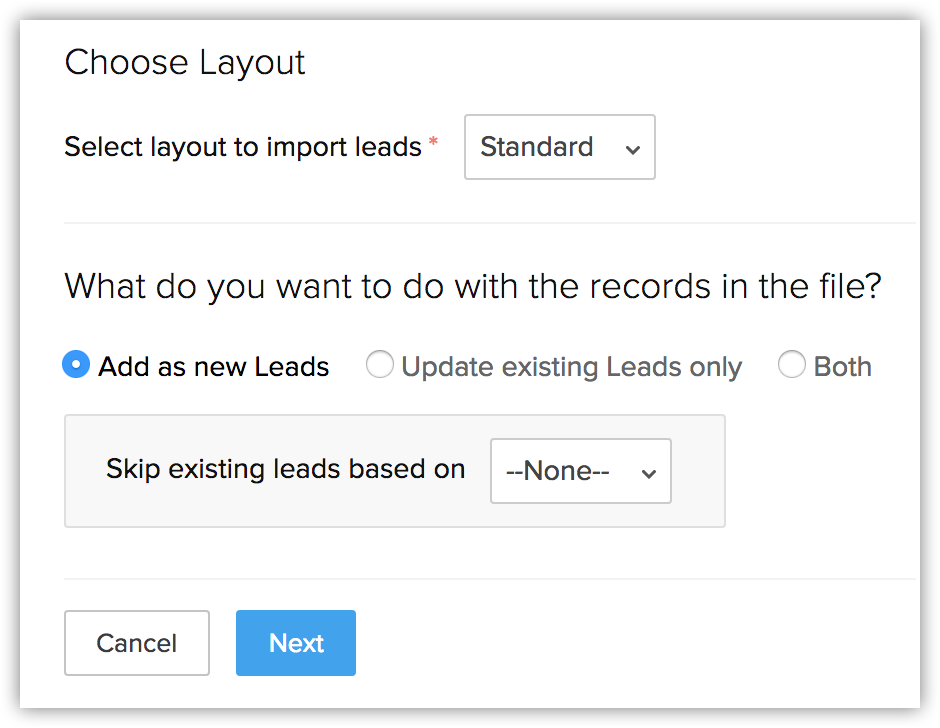
- Update existing [Records] only : Choose this option to make changes only to the existing records.Select Record ID or Email / Record Name from the drop-down list to find existing records that match those in the import file. This option helps you filter existing records that need to be updated. Additionally, you can choose to skip updating empty values in the records. For example: Say your CRM record has a value, Hospitality, for the field Industry and the import file does not have any value for the same field. When you import the data from the file and choose Skip updating empty values, then the empty value will not be overwritten and the Industry field value will be left unchanged. This will avoid the chance of any data loss.
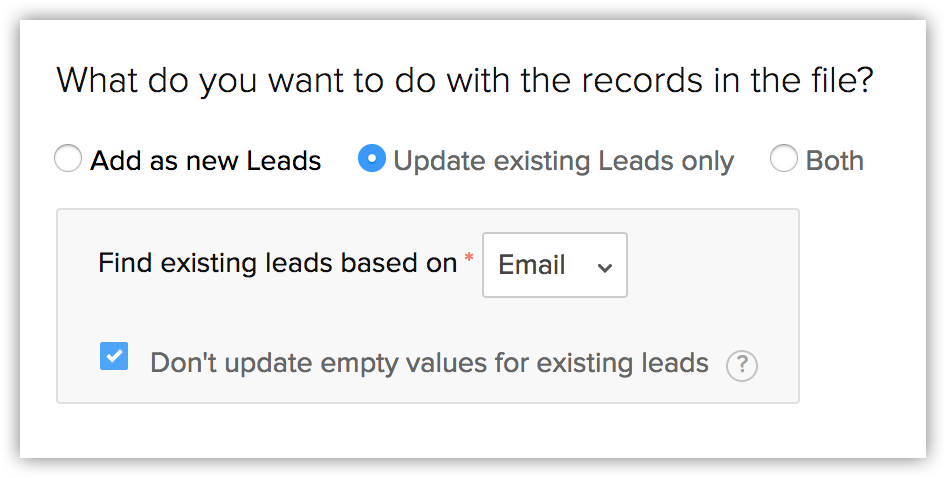
- Both : Choose this option to add new records as well as update the changes in the existing records.Select Record ID or Email / Record Name from the drop-down list to find existing records that match those in the import file. You have this option to filter existing records that needs to be updated. You can also choose to skip updating empty values from your import file to the records in Zoho CRM.
- Click Next .
- Map fields from the import file to those in Zoho CRM.The data from the first three columns in the import file will be available. Based on these data, formats for a certain field will be added. This format can be edited, if required.
- Click Create New Fields , if you are in need of custom fields that are not already available in your CRM account.
- Click Mapped and Unmapped to view the columns that are mapped and not mapped respectively with the fields in Zoho CRM.
- Click the Reset Field Mapping link to start mapping from scratch.Any mapping you have done so far will be removed and you can start over.
- Click the Apply Auto Mapping link to let CRM map the import columns with matching fields.The system will identify columns that match the CRM fields and map them automatically.
- Hover over the field and enter the field values in the Replace Empty Values text box.
Sometimes the field in an import file doesn't have a value, in case that field is marked mandatory in CRM, the record will not be imported because of absence of value. To avoid such situations, you can mention an alternate value that will replace the empty field.
For example, you have mapped the Last Name field from the file with the Last Name field in the Leads module, which is mandatory. So without the field value, the record will be skipped during the import process. To avoid that, you can specify the value that should replace the empty Last Name field. - Hover over the field and click the Add (+) icon next to the field name and map multiple fields in CRM with a single field from the file.
For example, if the Billing Address and the Shipping Address are same you can map both these CRM fields to the appropriate fields from the file. - Click the Assign Default Values tab and select the CRM Fields with the appropriate Default field values. Once the values are specified, all the records will have the field value that you have specified by default.
For example, you are importing a set of records to the Leads module where you want to define the appropriate Lead Owner and Tag the records that are imported. From the Assign Default Values tab you can select the Lead Owner and Tag Name field from CRM and choose the appropriate field values. This value will be added to all the records by default.
- Click Next.
- Select the Assign owner based on Assignment Rules checkbox and choose an assignment rule from the drop-down list or click Create Assignment Rules to create a new assignment rule.
- Check Trigger automation and process management, to allow related actions to be performed on records that are created or updated through import.
- Select a task from the Assign follow-up tasks drop down list or create a new task by clicking Create Workflow Task.
- Select the checkbox to Enable Manual Lead Approval .The records will be manually approved by the admin before being assigned to specific users. This option is available only for Leads, Contacts, Cases and custom modules. See Also Approve Records
- Click Finish .The import action will be initiated.

- Select the [Module ID] from the Find existing using field, if and only if you are re-importing the records that were exported from Zoho CRM. The [Module ID] field is generated by Zoho CRM and is therefore unique to Zoho CRM. Hence, it is ideal to choose this as a unique field in cases when you want to export a set of records from Zoho CRM to a spreadsheet, make some changes to it and import the records again. In this case, when you choose the [Module ID] as the unique field and choose to update the existing records, the matching records are seamlessly updated. Choosing the [Module ID] as a unique field in any other case may cause duplication of records.
- The unique fields are not case sensitive. That is, if the unique field's value in the import file is "ABC" and in the existing record, it is "abc", Zoho CRM will still identify this as a match.
- Once the Import process begins, you cannot cancel it.
- The manual approval option is available only while importing leads.
- If you select a workflow task while importing, the Notify Assignee option in the selected workflow task, will not be applicable.
- Default field values cannot be specified for the following fields:
Description
Call Duration
Auto number
Unique fields
Formula fields
Multi-select Lookup
Assigning default values for a field that is already mapped, will overwrite the existing field mapping that you have done.
The Trigger automation and process management option will be displayed only if there are less than 10,000 rows in the import file. If you are unable to view the option it means your import file has more than 10,000 rows.
The automation process may not necessarily complete once the records are imported. It may take time to complete the automation.
Import data to a Subform
- Add as new subform: Choose this option to import the records in the import file as new entries in the module. In order to avoid data duplication, you have the option to skip records from the file that match existing records.
- Update existing only: Choose this option to make changes only to the existing records. This option helps you filter existing records that need to be updated.
- Both: Choose this option to update the changes in the existing records and add new records if there are any. This option filters existing records that need to be updated. You can also choose to skip updating empty values from your import file.
Elements in a subform import file
How to import a subform
Click the appropriate module tab (e.g., Leads, Contacts, Accounts, etc.).
In the Module home page, click Import Subforms from the Create Contact dropdown.
Click Browse or drag and drop the file.
Select one of the following options: Add as new subform, Update existing Subform only, or Both.
Click Next.
Map the fields from the import file to those in the subform in Zoho CRM.
Click Next. The import will begin.
Import Notes
Many a time, you may face the need to write down notes for a lot of records at the same time. Sometimes the same note may need to be associated with multiple records. Instead of adding notes one at a time to each record, you can import them and get them associated with relevant contacts.
You can overcome this hassle by using the Import Notes feature offered by Zoho CRM. Simply export your existing records to a spreadsheet, add your notes in new columns and import the notes.
To import notes
- Prepare your spreadsheet (either exported from CRM or a new sheet) with your notes for each record. Make sure you have the Note Title and Note Content columns in your sheet. Apart from these two columns, the spreadsheet must have a column for one of the unique fields for the chosen module - Email, Record ID or any other unique field.
- In your Zoho CRM account, click the required module.
- Click the [Module] tab .Module refers to the tabs like Leads, Contacts, Accounts, etc.
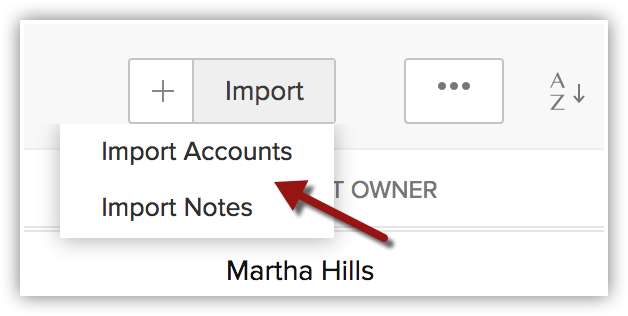
- In the [Module] Home page, click Import Notes .
- Browse the import file and upload it.
- When the file is uploaded, click Next.
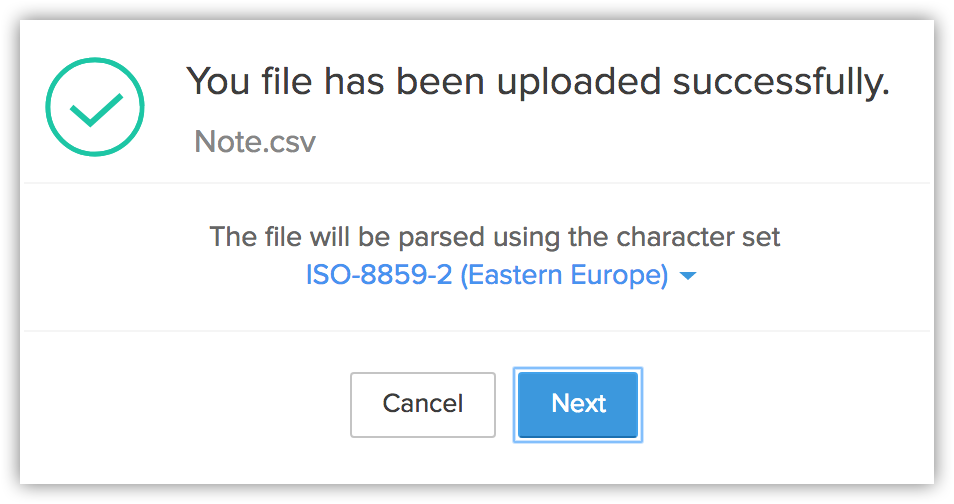
- Map fields from the import file to those in Zoho CRM.The data from the first three columns in the import file will be available. Based on this data, formats for certain field will be added. This format can be edited, if required.
- Click Mapped and Unmapped to view the columns that are mapped and not mapped respectively with the fields in Zoho CRM.
- Select the Reset mapped fields checkbox to start mapping from scratch.
- Click the Apply Auto Mapping link to let CRM map the import columns with matching fields.
- Click Mapped and Unmapped to view the columns that are mapped and not mapped respectively with the fields in Zoho CRM.
- Click Import .The import action will be initiated. Notes can be seen in the respective record's details page.
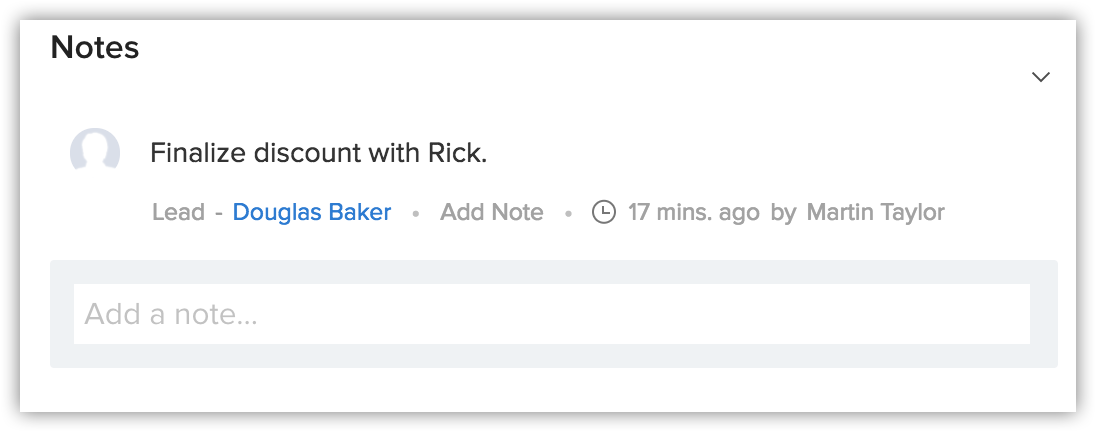

- The following permissions should be enabled in a user's profile to import notes:Create permission for Notes under Module Level Permissions .
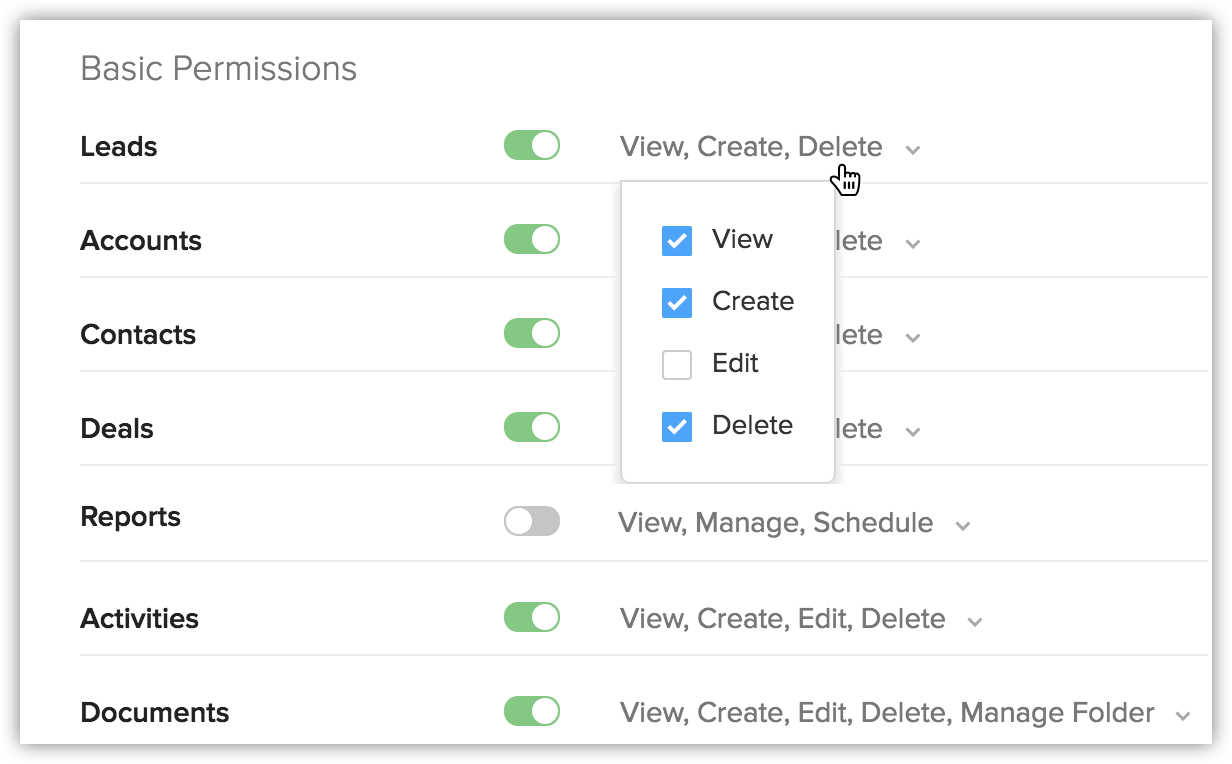
- Import Permissions enabled for the respective parent module in Profiles .For example, even if a user has Notes creation permission but does not have Import permissions for Leads, he/she will not be able to import notes for leads.
Import Users

Troubleshooting Tips
Related Articles
Importing Contacts from G Suite
The Import Contacts feature helps you import contacts from G Suite to Zoho CRM. It gives you the advantage of accessing your Google contacts from Zoho CRM, without having to sign in to your Google account, every time you want to import. The imported ...Adding, Importing, Modifying, and Re-inviting Users
In Zoho CRM, a user is one who manages records, whether their own or those shared by other users, within the organization. In addition to accessing the CRM data, some of the users can perform administrative functions for the smooth running of the CRM ...Migrating Data Between Zoho CRM Accounts
Retrieve Data files from Zoho CRM If you are planning to use a backup of data from Zoho CRM to import, the file structure does not change. If you exported data from another CRM, use the following folder structure: The Data folder should contain all ...Data Import
Import data into Zoho CRM from various sources Help guide Importing Data to Zoho CRM Viewing Import HistoryHow do I avoid creating duplicate records while importing?
While importing records, you can identify the duplicate records based on a unique field for each type of record. These are the fields for each type of record based on which you can check for duplicates: Leads - Email Contacts - Email Accounts - ...